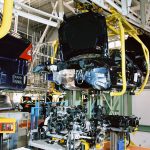 There has been a great deal written in recent months about the impact of political movements such as the Trump presidency and the British exit from the European Union on the economies of America and Britain respectively. Much of these discussions have been framed in the sense that they create a level of uncertainty that results in lower investment levels across industry sectors.
There has been a great deal written in recent months about the impact of political movements such as the Trump presidency and the British exit from the European Union on the economies of America and Britain respectively. Much of these discussions have been framed in the sense that they create a level of uncertainty that results in lower investment levels across industry sectors.
To try and help guide us in the right direction, Scott Baker of Northwestern University’s Kellogg School of Management, Nick Bloom of Stanford University, and Steven Davis of the University of Chicago Booth School of Business, have developed a tool to help us understand the economic and policy factors concerning our world.
They attempt to couple the certainty levels in the economy with the levels of business investment, and subsequently with economic growth. It’s perhaps no surprise, and in keeping with the Zeitgeist, that big investment decisions tend to be put off in uncertain times, whether that’s investing in plant or expanding the workforce.
Industrial variance
Of course, this disincentive to invest is strongest in industries that don’t tend to change a great deal. A recent paper set out to explore the investment environment during periods of economic and political uncertainty, and found that fast moving industries tend to maintain investment levels, but slower moving sectors don’t.
Now, what makes this interesting is that these slow moving industries are often exactly the ones that politicians such as Donald Trump propose revitalizing. They’re the kind of staid and glamour-less manufacturing sectors that don’t get a great deal of attention, but are nonetheless crucial. You could even argue that the recent German success has been founded on such sectors.
So a slowing of investment in this sector is bad news for all concerned. How does the Internet of Things fit into this? Well gathering data from sensors and machines, and using machine learning to make sense of that data, offers companies a relatively cheap way of investing in their plant and equipment.
Improvements on a budget
I spoke recently with IoT company n-Join and they told me how their systems can bring the benefits of smart manufacturing to nearly any plant. The system passively captures and records a host of previously untapped data, with the software then autonomously learning about the functioning of the entire production ecosystem, providing managers with real-time and historic data on any aspect of the production process.
It offers the prospect of improving efficiency and production quality, whilst reducing down time and errors. They told me the story of one manufacturer who were suffering from unplanned downtime due to unexplained water tank malfunction. By installing the Industrial IoT solution, they identified previously hidden patterns in pressure data from the tanks and managed to come up with a novel solution to the problem. And it all took a matter of hours to install the system and start collecting the data.
“Our technology exists to give manufacturers a painless way to benefit from the massive amounts of data that they already have living in their networks, whether they’re looking for gains in efficiency, sustainability, quality, or some other area,” says Michael Gallant, an n-Join executive living in New York. “Especially in times of political vertigo and depressed investment, we want to make it simple for our clients to innovate and push forward. We want to provide that easy on-ramp that can still lead to potentially huge gains.”
Indeed, when I spoke to IIoT vendor Senseye, they revealed that the payoff from installing this kind of simple technology can be a matter of months.
“With IIoT sensors and technology the maintenance team have a ‘force multiplier’ – rather than investing in a whole department of data scientists to direct their predictive maintenance (which is the approach taken in the aerospace industry), the maintenance team can now be proactive; with an AI team-member constantly analysing data already collected and new to help direct maintenance ahead of any potential failures and for less than the cost of an experienced data scientist. The ROI for a purely cloud-based system like ours (making use of already existing sensors) is reduced to a matter of months,” co-founder Alex Hill told me.
It’s the kind of investment that can be made, even when the external environment is as uncertain as we’re experiencing around the world today. Whether it’s enough to keep western economies moving remains to be seen, but it certainly can’t hurt.